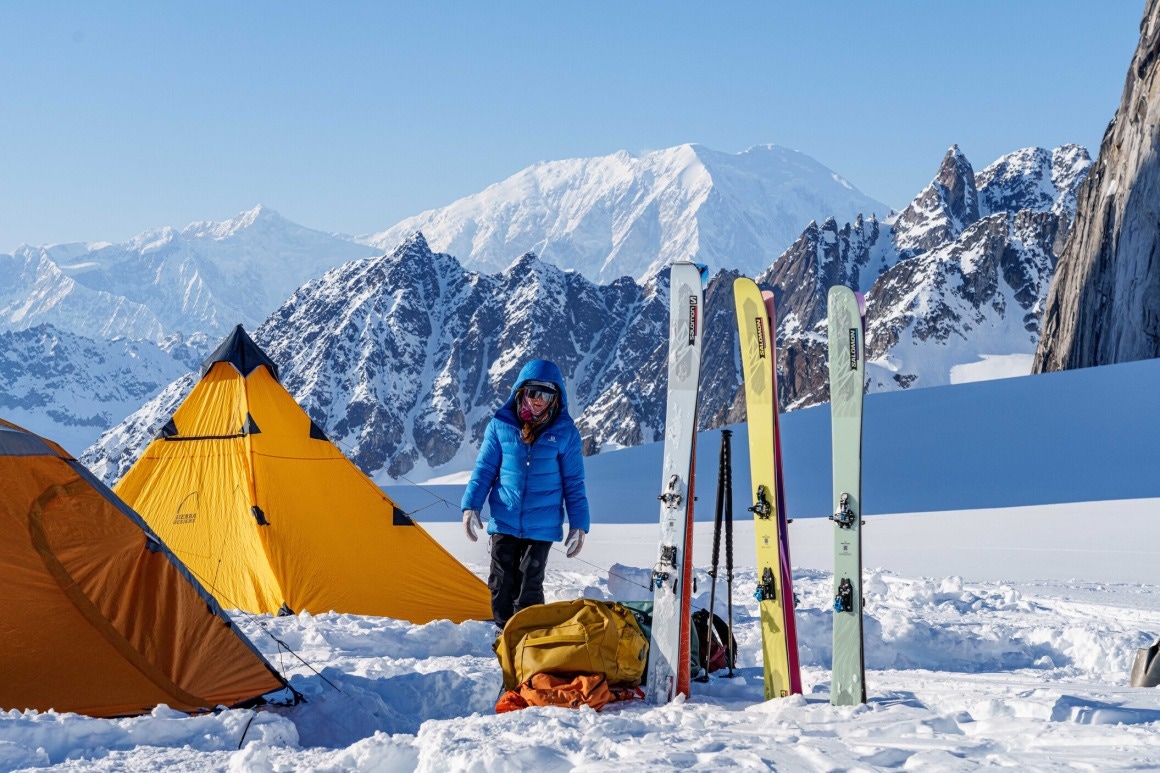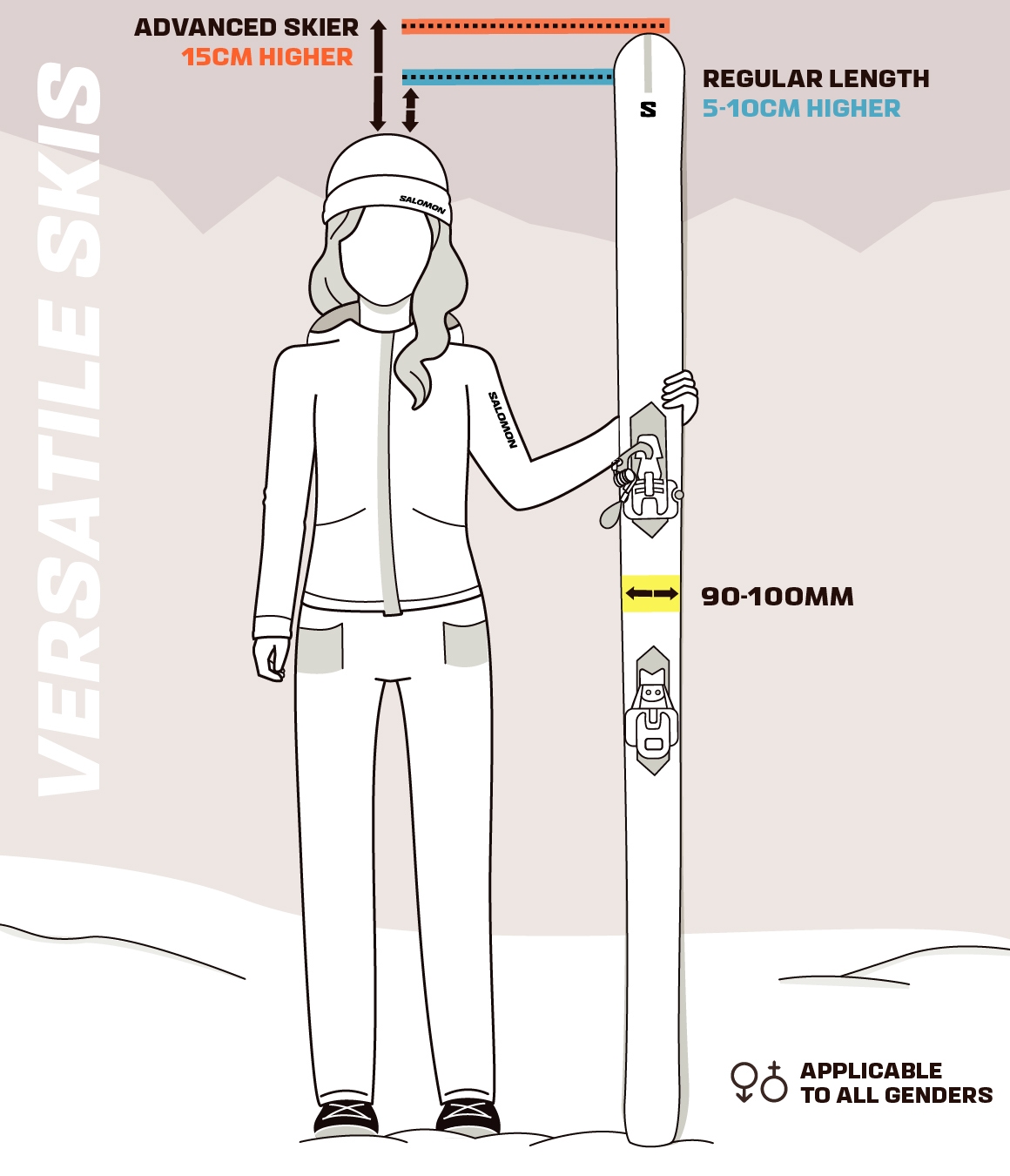If you like having powder up to your knees, enjoy skiing out of bounds, and skiing through the trees while it's snowing, then there is no doubt, you are a freerider and your choice of skis is essential! In this article we will explain the features of freeride skis and give you our advice on how to choose the right pair.
Rocker, the ski tip revolution
When you set a traditional ski down on a flat surface, the points of contact with the snow are the tip and the tail. At the same time, the waist, which is the part of the ski situated where the binding is mounted, is raised off the snow. This profile is called camber.
With a rocker profile, the points of the ski in contact with the snow are situated closer to the binding, towards the middle of the ski, while the tip rises up progressively. You can also have rocker at the tail of the ski following the same principle, this is what we call a tip and tail rocker.
A twin tip that curves at the tail as much at the tip (50% at the tip, 50% at the tail) creates a reverse camber that gives you amazing flotation in deep powder.
Nowadays, in varying proportions, you can find rocker profiles on skis in every range, whether they are made for groomed runs, all mountain, freeride or touring.
A tip rocker on freeride skis is important as it allows for better flotation on powder while also absorbing the bumps of uneven terrain. A tail rocker makes controlling the skis easier and adds maneuverability.
So, it is all about finding the right balance between twin tip skis that float in powder and skis with a rocker profile and a classic camber that give more grip on hard-packed snow and groomed runs.


Three families of freeride skis
The waist width of a ski is measured at the binding. Freeride skis have the widest waist width of all alpine skiing ranges and there are three types of freeride skis that are differentiated by this width.

Versatile, everyday skis

These skis have a waist width between 90 and 100mm. They have a significant rocker at the tip but not as much of it at the tail. These skis are associated with a traditional camber for grip. A rigid waist encourages grip on hard-packed snow, but also makes the skis harder to control. Softer skis are great for powder skiing, but tend to chatter at high speed and don't grip as well.
These freeride skis are the most versatile as they can be used to ski in all conditions and on a variety of terrain; powder, wide valleys, forest, or narrow couloirs.
With a waist width between 100 and 110mm, these skis are clearly geared towards freeride and deep snow. They help you stay on top of powder and have amazing flotation. On hard-packed snow, holding an edge is more difficult due to the substantial width of the ski.
If you are a regular visitor of groomed runs, check out the all mountain range, for ease on the slopes and also while freeriding. These skis have all the features you need to ski on a variety of terrains (an average width and rocker, rigid underfoot and flexible tip). Read our article on skis for groomed runs.

'Fat' skis for big snow days

With a waist width of over 110mm, these skis are known as fat skis. They are ideal for the deep powder days all freeriders impatiently wait for. They are certainly very wide, with a significant twin tip, yet certain fat skis have a traditional camber and are quite rigid underfoot. Clearly oriented at skiing in powder, these skis maintain their versatility on tracked snow, breakable crust or when you need to ski on groomed runs.
The most extreme models, which are very flexible and have reverse camber, are only used on big powder days and at no other time. Invest in this type of skis as a complement to a classic pair, as you may not be able to ski on them very often!

Free touring; ski lighter for more freedom

Free touring is a mix between ski touring and freeride, the free touring ski range is for skiers who don't mind using skins to hike up. Climbing a few hundred meters so you can come down the other side on fresh, untracked snow is for many people the epitome of freedom and exploring new horizons.
Also known as freerando, these skis have a waist width between 95 and 105mm and a tip rocker. They are usually a lighter version of the freeride skis you would use for skiing hard in the descents.
Free touring skis will need to be paired with a suitable pair of skins, and you will also need bindings that allow you to walk with a free heel for the climbs (read our article on alpine ski and ski touring bindings). You must also have ski boots with a 'walk' mode, a flexible cuff and inserts that make them compatible with the bindings...in this case, tech bindings.
I normally choose freeride skis depending on the terrain I'm going to be on. For powder, I go for a bigger waist, if you want to ski all around or in a place where it's not just powder, I go for a smaller waist.

Lovisa ROSENGREN
Which freeride ski length to choose?
Generally, in order to choose the length of your freeride skis, you need to add between 5 and 10 cm to your height. This increases flotation on powder and stability at high speeds. The rocker means that the skis are easy to handle despite their length.
If you are an advanced skier, and you like making turns at high speeds in large, open spaces, then you can add up to 15cm to your height to find the right length of your skis.
For free touring, choosing skis 5cm shorter than you will allow you to have skis which are lighter and easier to maneuver for climbs and descents.
More and more manufacturers recommend choosing the size of your skis according to your weight, follow their recommendations.
As well as suitable gear, freeride skiing requires good knowledge of the mountains in winter. Don't go off piste on your own or without this essential equipment trio: transceiver, shovel and probe.
An airbag pack, which allows you to stay afloat in an avalanche, has proven its worth and is increasingly used by skiers. There is always something new to learn in the mountains. It's really important to train, ask yourself questions and go on courses regularly if you want to practice freeriding!
Check out our Stories and guides for more articles about skiing.













